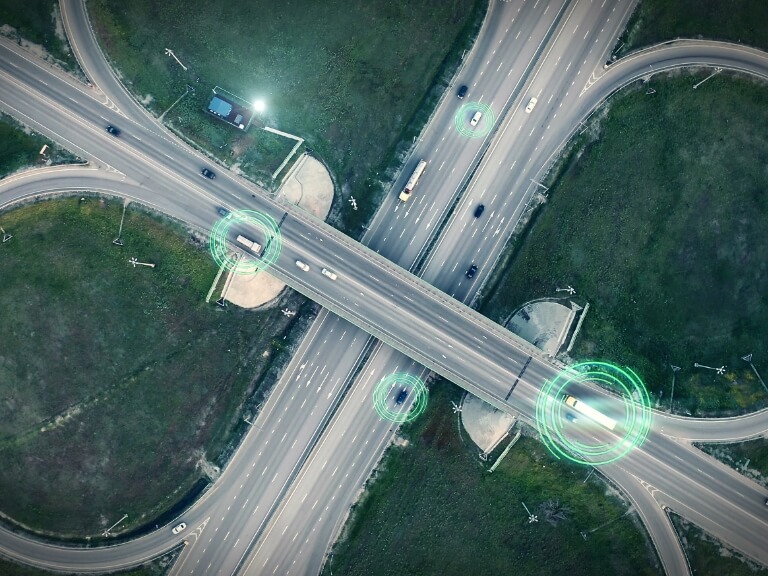Today we are faced with a multitude of new customer requirements. The Amazon Effect has established the benchmark that distributors and consumers now want their deliveries within 24 hours. While supply chain deliveries were expected to be made once per week, the minimum now is 3 to 5 deliveries per week. Dispatchers are challenged with the amount of “real time” data that is needed to maintain route efficiency and load minimums (required to keep costs down).
How is a common freight shipper supposed to compete with that? In reality, you probably can’t “compete” with that kind of expedited service. Amazon has differentiated itself by establishing a unique warehouse and distribution model, and by providing its customers with unprecedented levels of service. The impact of what’s known as the “Amazon Effect” touches not only other e-commerce retailers, but also trucking companies offering LTL, truckload, and expedited freight services.
BOLT can’t provide the warehouses and distribution of Amazon. BUT since BOLT tracks the freight in addition to one or more trucks, it can provide you with the insight into your inbound versus outbound trade in order to better match up routes and shipments. Using connected telematics solutions enables real time, in-route updates, allowing for warehouse personnel to prepare for loading or unloading to eliminate wait times. If, in one scenario, a shipper can delay an outbound load by maybe 15 or 20 minutes, and in doing so, increase the load capacity on that trailer by 10% to 15%, they’ve made a dramatic impact on that outbound freight being more efficient.
The majority of tracking ability, such as truck performance and maintenance scheduling, is built into BOLT’s basic package and our dispatchers love all the capabilities. BOLT goes even a step further when combined with Tandem Workflow, our driver app, which operates in conjunction with the newest electronic logging devices (ELDs) to track freight, delivery, detention time, proof-of-delivery, and even weather and traffic that can cause delays. Additionally, the app allows for immediate invoicing and allows drivers to quickly comment on each delivery.
In order to compete effectively and to make deliveries in an expedited manner, many companies are splitting loads among several drivers – thus providing the ability to deliver quickly and gain a competitive advantage.
BOLT is one of the few systems today that can manage split loads and correctly pay each driver/carrier for their segment as well as keep both dispatch and your customers alerted as to the status of their respective delivery. Traditional software tracks the truck and thus cannot always handle split loads in the manner they are executed today. Your old system may require two or more separate dispatches in order to complete a route.
COVID-19 has added additional requirements since many are working from home with limited access to all/current information dispatchers need when consignees ask “where is my freight?”. Brokers and consumers expect “real time” visibility of the location and ETAs for their freight. The demand for drivers continues to be a major issue. Some of the issues are: home time demands, managing in-cab cameras, dwell time, and individual stop locations with different restrictions. Enhanced dispatch combined with driver apps (like BOLT Tandem WF) provide current weather, traffic, and detailed information regarding current load freight data and pickup/delivery details
Current standard routes need to be modified to be compliant with the HOS rules. ELDs and other modern technologies collect a tremendous amount of information that aid in this re-routing process. Recent business challenges include an emphasis on spotting trailers – thus creating an additional cost and saves considerable driving time. Stops may need to be added and routes have to be changed. Many routes need to be split with drop/hooks using more than one tractor and driver. Information collected and applied to previous freight requirements and prior trip performance can be used to improve the percent of load capacity and minimize empty miles.
Depending on the size of fleets, additional remote locations may need to be identified to use multiple tractors and/or drivers to complete their shipment on time and manage cost efficiently. Many loads are now split between 2-3+ drivers and multiple tractors in order to deliver efficiently and on time. FTL fleets are looking to expand by adding LTL additions. Some fleets are combining with independent carriers to cover specific route segments.
BOLT was designed and implemented to dispatch freight. Freight beginning with raw materials, work-in-process, finished goods and distribution must be continuously tracked. Food products require real-time compliance data from the field to the consumers’ plates. BOLT captures the information needed to assist marketing and provide financial information regarding transportation. Trucking companies are required to fill major areas of a manufacturer/distributors supply chain.
BOLT and Amazon dispatch freight for inventory management and customer satisfaction.
Even a small company can learn from a titan like Amazon the importance to prioritize intelligent operations, especially when it comes to taking control over logistics. To meet the changing expectations of consumers while remaining profitable and generating growth, logistics and transportation companies should consider solutions (e.g., BOLT) that offer a combination of flexibility, convenience and competitive pricing. Increased visibility into the supply chain allows fleets to optimize routes, manage drivers and ensure goods remain in motion — all of which helps meet rapid-delivery expectations.

